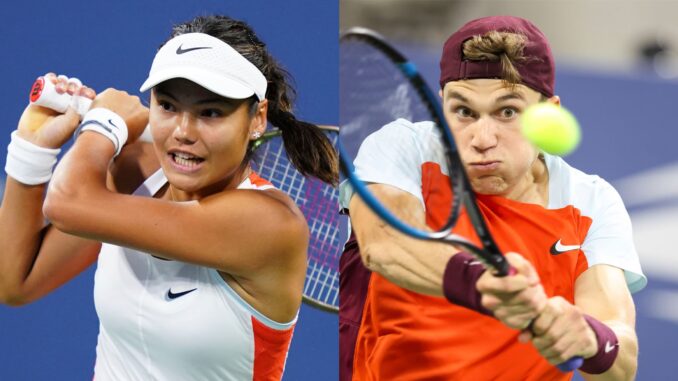
The 2025 Wimbledon Championships have been electrified not just by breathtaking rallies but by a heated debate over the introduction of the Electronic Line Calling (ELC) system, marking the first time in 148 years that the tournament has replaced human line judges with Hawk-Eye technology. British tennis stars Emma Raducanu and Jack Draper, the nation’s top-ranked players, have openly questioned the system’s accuracy, sparking a sharp rebuke from former British No. 1 and four-time Wimbledon semi-finalist Tim Henman. Labeling their criticisms as “utter garbage,” Henman, now a BBC commentator and All England Club committee member, has ignited a firestorm of discussion, highlighting the tensions between tradition, technology, and player trust at one of tennis’s most storied events.
The controversy erupted during the tournament’s early rounds, with a high-profile blunder during Sonay Kartal’s fourth-round match against Anastasia Pavlyuchenkova on Centre Court. A shot by Kartal, clearly out, went uncalled due to the ELC system being inadvertently “deactivated” by human error, leading to a four-minute delay and a replayed point. The All England Club issued an apology, admitting the mistake and assuring fans that system changes had been implemented to prevent further errors. “This error cannot now be repeated,” officials stated, attributing the issue to an operator’s failure to keep the system active. Yet, the incident fueled skepticism among players, with Raducanu and Draper leading the charge.
Raducanu, the 2021 US Open champion, expressed frustration after her third-round loss to Aryna Sabalenka, where she contested a call she believed was “for sure out.” “It’s kind of disappointing, the tournament here, that the calls can be so wrong,” she said, noting that she had encountered “a few in my other matches, too, that have been very wrong.” Similarly, Draper, who fell to Marin Cilic in the second round, questioned the system’s reliability, stating, “I don’t think it’s 100% accurate, in all honesty.” Their comments echoed a broader sentiment among players, including Belinda Bencic, who remarked that “most of us have the same opinion” about the system’s inconsistencies at Wimbledon.
Henman, however, was unyielding in his defense of the technology. “The narrative around players questioning the accuracy of the calling is just utter garbage,” he declared, emphasizing that Hawk-Eye, an enhanced version of the system used when line judges were present, is “absolutely 100 percent” accurate when properly activated. Drawing on his experience commentating matches, Henman reviewed disputed calls in slow motion, observing, “They are on the outside edge of the line, they hit the line. You can sometimes see even that little puff of white chalk.” He argued that players’ perceptions are skewed by the heat of the moment, with balls traveling at 140 miles per hour making it difficult to judge calls in real time. “You’re hoping the ball is going to be out to win the point,” he added, dismissing complaints as emotionally driven rather than fact-based.
The controversy deepened when another malfunction occurred during Taylor Fritz’s quarter-final against Karen Khachanov on Court One, forcing a point to be replayed after the system incorrectly called a “fault.” The umpire, Louise Azemar-Engzell, explained, “The system is now working,” but the incident raised fresh doubts. Khachanov himself expressed unease, stating, “I’m more for line umpires, to be honest. It looks like AI and electronic line calls have to be very precise, but we’ve seen a couple of mistakes.” Even tennis legend John McEnroe, Henman’s BBC colleague, voiced skepticism, quipping, “I might have a little more hair if it wasn’t for all those line judges blowing calls,” and questioning the system’s reported 3mm margin of error.
Despite the criticism, some players, like Novak Djokovic, have endorsed the ELC, citing its use at other Grand Slams like the 2021 Australian Open. British doubles star Joe Salisbury offered a nuanced perspective, noting that the absence of line judges has altered the game’s atmosphere, though he hadn’t personally encountered glaring errors. Wimbledon’s tournament director, Jamie Baker, defended the system, highlighting its widespread use across the ATP Tour and other majors, stating, “The accuracy and reliability of the system is in as good a place as it has been for tennis.”
As Wimbledon 2025 progresses, the debate over electronic line calling underscores the challenges of integrating technology into a sport steeped in tradition. Henman’s staunch defense, rooted in his belief in Hawk-Eye’s precision, contrasts sharply with the frustrations of players like Raducanu and Draper, who feel let down by errors at critical moments. With the All England Club standing firm on its technological shift, the saga has added an unexpected layer of drama to an already thrilling tournament, leaving fans and players alike wondering whether trust in the system can be fully restored.
Leave a Reply